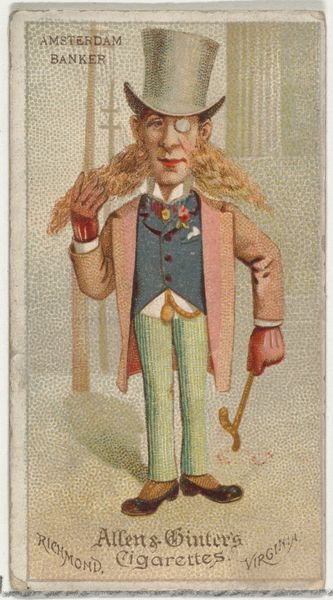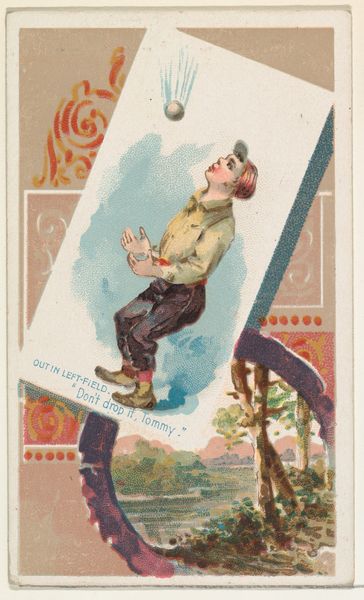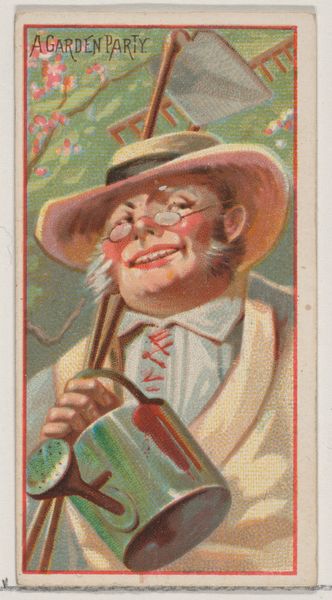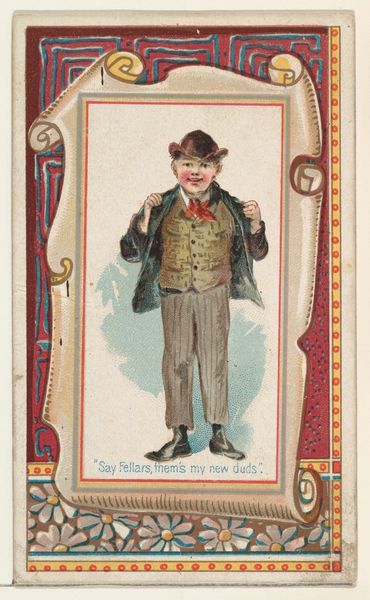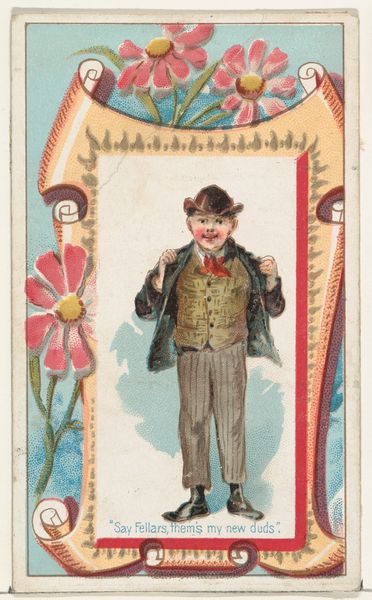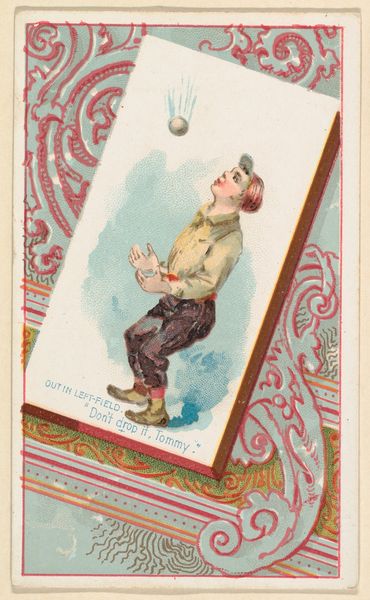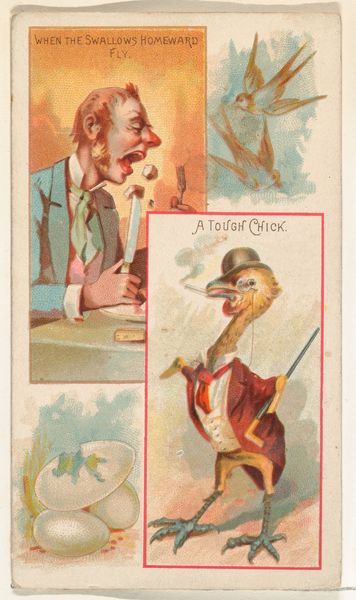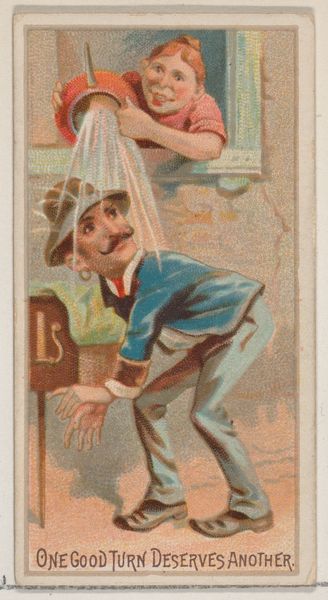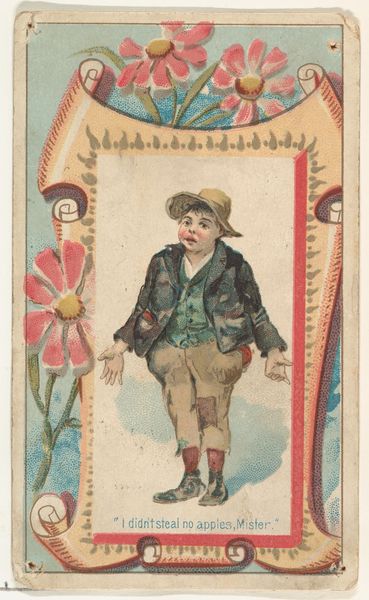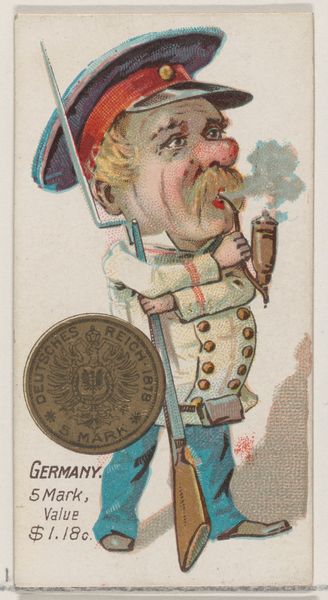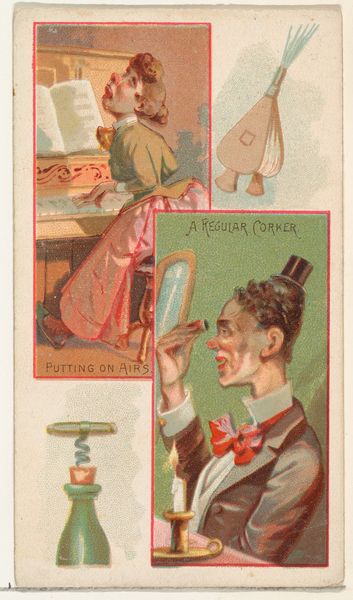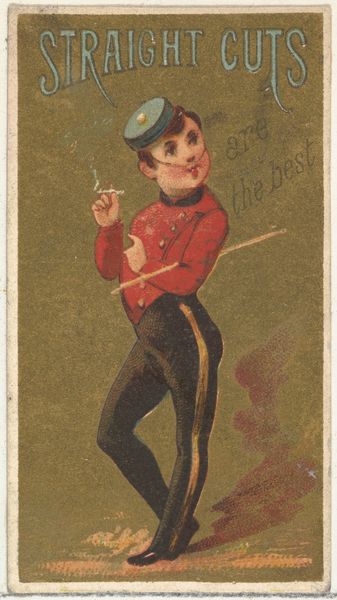
When the Swallows Homeward Fly, from the Jokes series (N87) for Duke brand cigarettes 1890
0:00
0:00
drawing, print, watercolor
#
drawing
# print
#
caricature
#
caricature
#
watercolor
#
watercolour illustration
#
genre-painting
Dimensions: Sheet: 2 3/4 × 1 1/2 in. (7 × 3.8 cm)
Copyright: Public Domain
Curator: This small watercolor and print, "When the Swallows Homeward Fly" from the "Jokes" series, was created around 1890 by W. Duke, Sons & Co. It resides here with us at The Met. Quite the comical scene, isn't it? Editor: Indeed! The immediate impression is one of… well, grotesque exaggeration. The artist uses distorted proportions to create a figure that’s almost a caricature of consumption. Note the sheer imbalance – the small plate dwarfed by that cavernous mouth! It's unsettling. Curator: That grotesque exaggeration is precisely the point. These cigarette cards, distributed to promote Duke brand products, relied on popular, often crude, humor. The image participates in late 19th-century anxieties around class, manners, and the supposed excesses of the nouveau riche. Editor: Semiotically, consider the fork and knife, suspended mid-air like implements of some strange ritual. The open mouth—almost animalistic—destroys any notion of restraint; these objects read as weapons, not utensils. Color too supports this narrative. That sickly palette of pale oranges and pinks contributes to an overall mood of queasy repulsion. Curator: Precisely! This image speaks volumes about social mobility and shifting identities. Eating was not merely sustenance but performance. Notice the figure’s affected attire. The humor derives from the dissonance between his aspiration to sophistication and his uncontrolled appetite. It reinforces prejudiced assumptions and perpetuates negative stereotypes. Editor: Yet the artist's mastery should be recognized—see how effectively form follows function here? Every line exaggerates: that enormous nose, those bulging eyes. Compositionally, that strong diagonal line emphasizes the impending plunge of food. It creates tension. Curator: And this tension, that sense of barely controlled chaos, mirrors broader societal tensions of the time. New wealth challenged old orders, and these images reinforced existing hierarchies, positioning certain behaviours and identities as inherently ridiculous. Even harmful. Editor: It serves as a good lesson: visual economy doesn't necessarily require artistry but intent. What lingers most is that disturbing, open mouth – it resonates beyond the era. Curator: Absolutely. Though the laughter it once provoked might be tinged with discomfort today, these cards offer a potent glimpse into the complex social fabric of the Gilded Age. They remind us that what we find funny – and who we laugh at – always carries deeper implications.
Comments
No comments
Be the first to comment and join the conversation on the ultimate creative platform.
